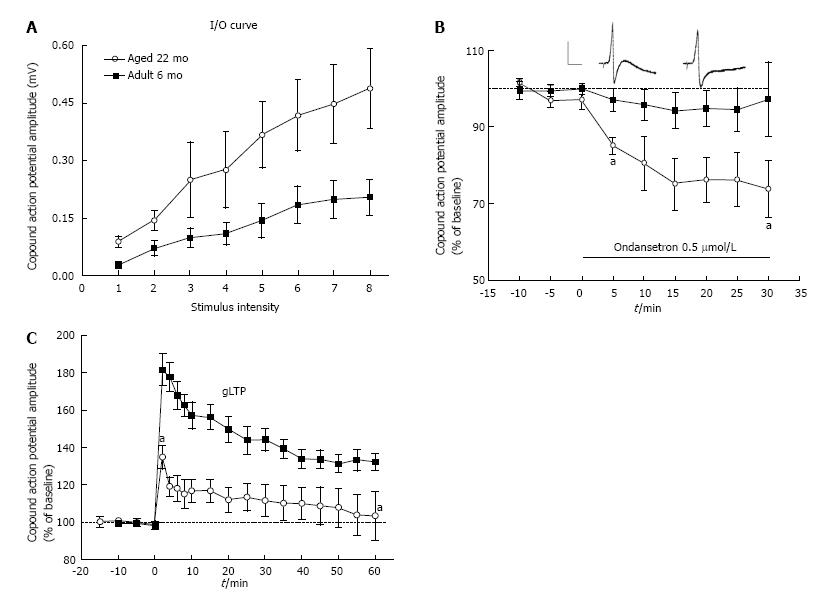Copyright
©The Author(s) 2016.
Figure 3 Expression of ganglionic long-term potentiation in sympathetic superior cervical ganglia in aged (22 mo) hypertensive rats.
A: Input/output curve (I/O) of aged animal ganglia compared to adult (6 mo) ganglia, indicating enhanced synaptic activity in the aged animal ganglia. Stimulus intensity numbers along the X-axis are arbitrary values, where 1 is the minimal and 8 the maximal response (CAP amplitude in mV). Each point from aged rats is significantly different from matching points of adult rats, and is the mean ± SEM from 5-7 ganglia; B: Inhibition of “baseline” ganglionic transmission in aged rats by a 5-HT3 receptor antagonist ondansetron (Zofran) as an indication of expression of gLTP in vivo. Zofran (0.5 μmol/L, solid horizontal line) decreased CAP baseline of ganglia isolated from aged but not of those isolated from adult rats. All points between the two “a“ are significantly different (P < 0.05) from corresponding point for adult rats. Each point in each series is the mean ± SEM from 5-7 ganglia. Inset: CAPs of aged rats before and after application of drug; calibration 0.5 mV/20 ms; C: High frequency stimulation (HFS: 20 Hz/20 s, at 0 time) of the preganglionic nerves evoked robust gLTP in ganglia excised from adult rats. Identical protocol in ganglia from aged rats produced no gLTP. Each point represents the mean ± SEM from 5 ganglia. Adapted from ref. [35]. gLTP: Ganglionic long-term potentiation; CAP: Compound action potential.
- Citation: Alkadhi KA. Long-term potentiation in autonomic ganglia: Potential role in cardiovascular disorders. World J Pharmacol 2016; 5(2): 51-58
- URL: https://www.wjgnet.com/2220-3192/full/v5/i2/51.htm
- DOI: https://dx.doi.org/10.5497/wjp.v5.i2.51









